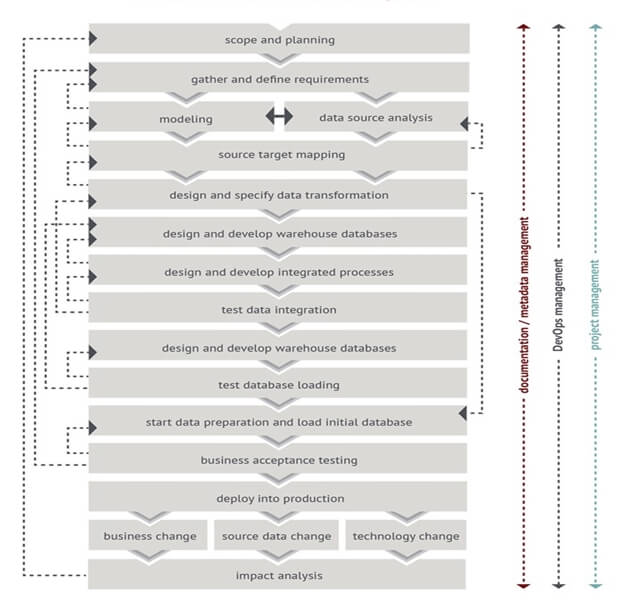What is Data Warehouse Automation (DWA)?
Data warehouse is a central repository for data captured by an enterprise's varied sources to provide meaningful business insights for making strategic decisions while reducing resources, cost, and project risk.
DWA is the process of automation of all the activities such as designing, building, and maintaining a DW can be achieved in much less time compared to traditional practices including the implementation process.
When to use DWA?
- Creating a new data warehouse for your entire enterprise
- Migrating off an old DW
- Re-engineering an existing DW.
- Consolidating data marts
Components of Data Warehouse Automation:
Load manager: Being the front component it’s associated with the data extraction and loading operations into the warehouse.
Warehouse Manager: As the word says it’s associated with the management of the data performing operations like analysis of data to ensure consistency, archiving, and backing-up data.
Query Manager: Also known as the backend component performs all the operation operations related to the management and execution of user queries to the appropriate tables for the execution of queries.
End-user access tools:
- Data Reporting
- Query Tools
- Application development tools
- EIS tools
- OLAP tools and data mining tools
Data Warehouse Architecture

Source:- www.wherescape.com
Use cases of Data Warehouse Automation
Prototyping Data warehouse:-Prototyping is the key to agile development where gathering data quickly and consistently is the key to ensure DW is kept updated to meet business needs.
Agile development:-Building custom codes may be risky at times DWA supports fast and iterative development as it creates ease in re-writing codes while automating the process of documentation. These automatically generated ETL along with fast editing support the agile DW practices.
Creating specialized Data marts:-DWA provides automated schema and process generation that supports rapid and iterative development of Data Marts. Automation can be used to capture standards across all data marts automating the documentation process as design patterns are in a single location to support analysis.
Optimizing data warehouse management:- Frequently faced problems such as no proper documentation, poor mapping, unclear structures, and complex scheduling can be solved easily that too by incurring less cost. The metadata concept can be applied to solve the above-mentioned problem along with maintenance support.
With the reduction in load and risk involved in manual coding, documentation, etc. your organization will be in a better position to make strategic decisions, and save time and cost.
You May Also Read:-




